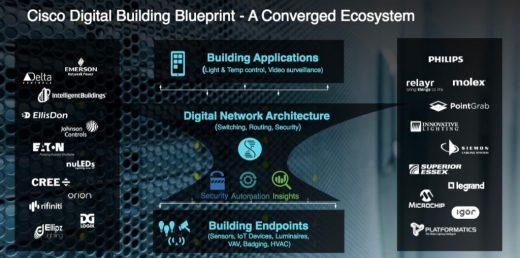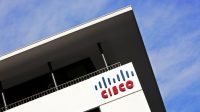Cisco brings digital know-how to smart buildings
Cisco brings digital know-how to smart buildings

However, as the number of networks and connections within buildings grows, they are becoming increasingly complex. Interconnecting and interoperating isolated building systems such as lighting, HVAC, badging systems, security, CCTV, sensors and audio-video equipment, into a single converged system is fundamental to the digital transformation of buildings.
See also: What are the 4 layers of data architecture needed for smart cities?
Today’s building systems and equipment need to work together smoothly and efficiently to meet owners’ and occupants’ needs, which requires a holistic approach of integrating new technologies.This month Cisco launched the Catalyst Digital Building Series switch- industry’s first purpose-built switch optimized for low voltage PoE (Power over Ethernet) deployments, IoT connectivity and building automation in smart buildings.
I spoke to Sachin Gupta, VP Product Management and Pankaj Gupta, Senior Director Marketing, Cisco to learn more.

Sachin Gupta explained that the Switch powers and connects building systems onto a single, low-voltage IP network through the switch’s support of a key IoT protocol called the Constrained Application Protocol (CoAP) —an industry first. He noted:
“What we found is, we needed to innovate for IoT. You can’t just take your standard solution-a lot of the value can be extended but you need to add more innovation to support a digital building.”
Digital Building Series switches will greatly simplify the deployment experience with integrated security and lower total cost of ownership. Two examples of their deployment are within the Sinclair Hotel and Alpiq In Tec.
The Sinclair Hotel
The Sinclair Hotel is a 1930’s Art Deco building being converted into a 165 room four-star hotel in FortWorth, Texas as part of the Marriott Autograph Collection portfolio. The retrofit of the building includes the use of switches to aid the guest experience: downloading a mobile app means that when they walk into their room, they will be able to control the LED lighting including the intensity, on and off, the hues and mood. They will also be able to adjust the settings of the air conditioning and adjust the smart blinds accordingly. It’s “an integration of multiple sensors coming together and bringing a very rich, personalized experience for the guests notes Sachin Gupta.”Guest room preferences are also saved for when they visit again. ”
The switches Perpetual Universal Power Over Ethernet ensures uninterrupted powering of endpoints during upgrades, reboots or power outages. Fast UPOE technology enables lights to power on within 5 seconds of power restoration-an industry first. The hotel will also utilize occupancy sensors to turn off room utilities when rooms are not occupied. The hotel is already experiencing a 50% reduction in energy costs and is scheduled for completion this summer.
Alpiq InTec
Alpiq In Tec is Switzerland’s market leader in the fields of building technology and renewable energy. The utilized Cisco’s Digital Building Solution to build a new platform with smart lighting, edge sensor technology, energy management and intelligent collaboration. One of the solutions deployed was Connected Lighting in partnership with Philips.
LED lighting fixtures equipped with integrated sensors to analyze environmental data, traffic patterns & building occupancy, manage space and control lighting and connected devices throughout the building, lowering energy consumption and improving employee satisfaction. Combined with Cisco Spark, tenants can interact with the building and utilize open rooms and smart spaces. The Digital “meeting room” experience enables interactions via iPads, wireless file sharing, voice and video to connect across geographies.
Notably, the switches can be installed and deployed through the use of Bluetooth and a mobile app making the technology accessible to a variety of business settings without tech staff. It’s also fanless, meaning that it runs quietly unlike existing models. Pankaj Gupta explained that interest in the digital switches has extended across many different verticals and regions with “a lot of interest in hospitality and healthcare settings and school systems, especially in Florida where the customer are looking into how to save costs and manage the central lighting from one space.”
The post Cisco brings digital know-how to smart buildings appeared first on ReadWrite.
(42)







